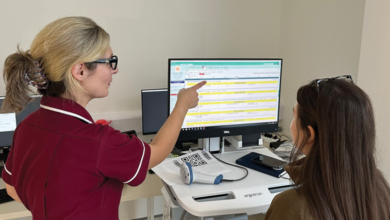It’s a question of analysis
 Technology partner at Deloitte in Belfast, Danny McConnell, takes a look at the latest trends making an impact on local businesses.
Technology partner at Deloitte in Belfast, Danny McConnell, takes a look at the latest trends making an impact on local businesses.
Few areas of business today are changing faster than where and how analytics are being used. Turn your head for a second and – boom – you’re falling to the back of the pack.
From big data and visualisation to predictive modelling and more, analytics represents a rapidly evolving world of technologies and tools that few have time to keep up with.
The challenge is to understand which trends really matter and which will prove short-lived, which are hype and which will deliver tangible, timely business value. A recent Deloitte publication
– Analytics Trends 2014 (www.deloitte.com/us/analyticstrends) – identified key trends, a number of which are discussed below:
• Talent
Conventional wisdom says companies are facing a large supply gap of data analytics, with significant shortages at all levels. A Gartner 2012 CIO Agenda Report indicated that organisations are looking for part-statistician, part-predictive analyst, part-business analyst, and part-trusted advisor – a tall order by any standards.
From a local market perspective, we have seen two significant developments to address the analytics related talent challenge.
Firstly, increasing the talent pool through targeted training and development by taking advantage of the Deloitte Analytics Training Academy that has been developed to run in conjunction with Belfast Metropolitan College (BMC) and the Department for Employment and Learning (DEL).
Secondly, the establishment of alternative delivery models where organisations work in partnership with analytics service providers, who can deliver access to multi-skilled teams, rather than seeking to recruit, develop and retain their own talent.
• Visualisation
There is no question that visualisation has become a critical capability for organisations of virtually every shape and size. Easy-to-use software makes complex data accessible and understandable for almost any business user.
From discovery and visual exploration to pattern and relationship identification, today’s visualisation tools easily affirm the adage that a picture is worth a thousand words, or in this case, numbers. However, the availability of more data, leads to a greater demand to visualise data.
From our experience of assisting clients on the analytics journey, it is evident that a strategy is needed for structuring all the relevant data. Linking the data in a meaningful way is critical in terms of facilitating the power of visualisation.
• Data Discovery
Discovery is increasingly a function that involves data management and analytics as a primary focus. Leading organisations are adopting data discovery platforms where more types of data can be considered. Ultimately, fast moving data can be analysed at speed.
• Data Warehousing
The rise of big data has many implications, in particular calling into question the future of the enterprise data warehouse (EDW). The trend may not go that far as EDW is still a very desirable way to store and process data for analytics. The establishment of the Deloitte analytics lab provides clients with multi-faceted opportunities to gain a greater understanding of data.
The continued growth of the use of analytics means companies are increasingly turning to it in order to make a difference to their performance. What is clear is that an appropriate use of data analytics feeds directly to the bottom line and that, at the end of the day, is what its use is all about.
Danny McConnell can be contacted at dcconnell@deloitte.co.uk or on 028 9053 1169.





